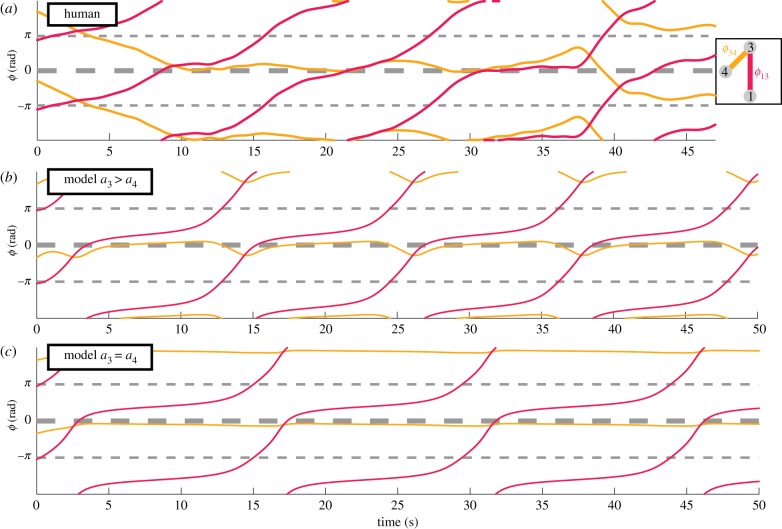Figure 6.
Model with non-uniform coupling captures detailed relative phase dynamics observed in human social coordination. (a) Experimental observation of the coordination dynamics between three persons (agent 1, 3, 4, spatially situated as in legend) in terms of two relative phases (ϕ13, ϕ34; y-coordinates) as a function of time (x-coordinates). ϕ34 (yellow) persisted at inphase for a long time (10–37 s trajectory flattened near ϕ = 0) before switching to antiphase (40 s; inphase and antiphase are labelled with thick and thin dashed lines, respectively, throughout this figure). ϕ13 (red) dwelt at inphase intermittently (flattening of trajectory around 10, 20, and 35 s). Three bumps appeared in ϕ34 during its long dwell at inphase (near 15, 25, 37 s), which followed the dwells in ϕ13, indicating a possible influence of ϕ13 on ϕ34. (b,c) Two simulated trials with identical initial conditions and natural frequencies, estimated from the human data. In (b), agent 3 is more ‘social’ than agent 4 (a3 > a4). More precisely, agent 3 has a much stronger coupling (a3 = 1) than all others (a1 = a4 = b1 = b3 = b4 = 0.105, as in previous sections). The recurring bumps in ϕ34 are nicely reproduced. In (c), agents 3 and 4 are equally ‘social’ (a3 = a4 = 0.5525, keeping the same average as in (b)). ϕ34 is virtually flat throughout the trial. (Online version in colour.)

